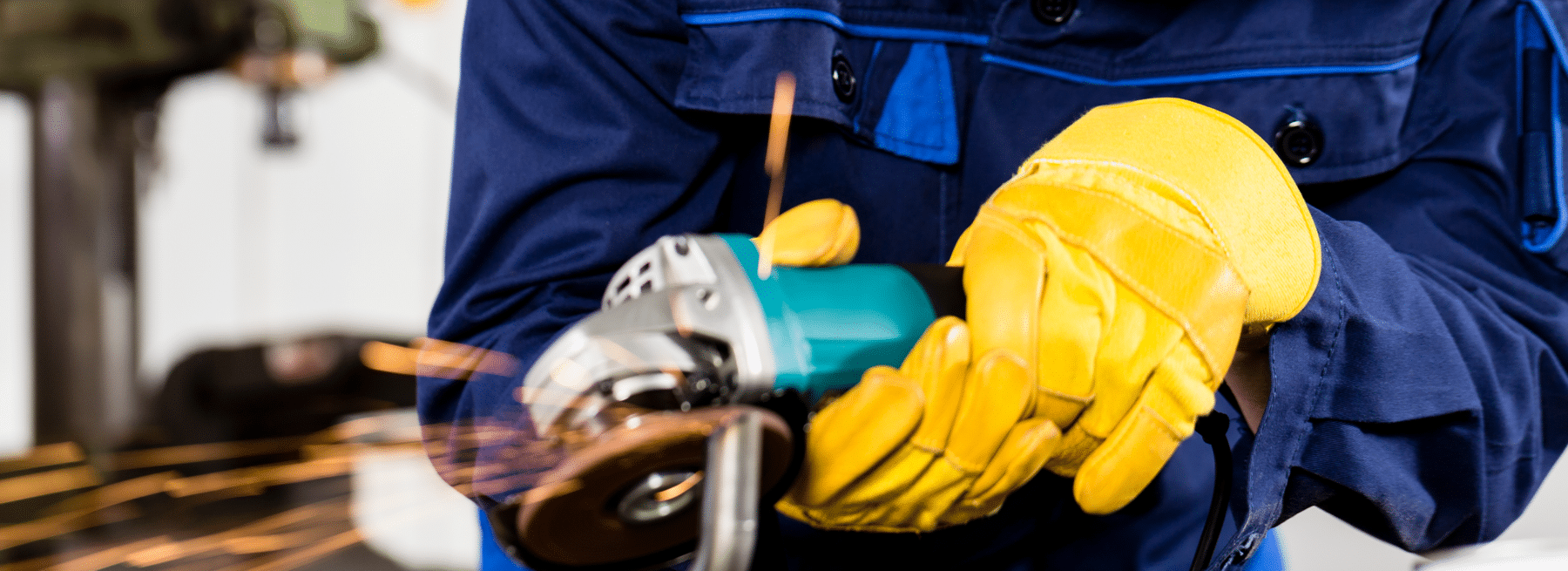Manufacturing plants are full of heavy machinery and thousands of moving parts, increasing the chances of serious or fatal accidents. Unquestionably, employee safety is a top priority in the industry. That’s not the only thing that is top of mind in the manufacturing sector. The other is dealing with security vulnerabilities.
Top Manufacturing Security Issues
The manufacturing industry faces many security issues including the theft of information. They need to protect employee and customer information, company financial records, trade secrets, and product information. That said, here are the top manufacturing security challenges.
Hybrid attacks
With the growing number of cybersecurity threats, the manufacturing industry has been taking steps to minimize those threats. In doing so, it cannot neglect physical security. The role of physical security is to protect their workers and the products they produce. They may have rooms in the building with highly restricted access. These may contain a lot of company-sensitive data. Hence, the need for access control.
Manufacturing has been adopting more and more connected technology. These technologies can be hacked. In addition to the growing number of cybersecurity threats, there has also been an increase in hybrid physical and cyberattacks.
Things such as smart doors, networked security cameras, locks, and alarms that are used to keep property secure, have become hacker targets. Once they gain control over these systems, they are able to enter the building and can easily carry out their plans.
Since cybersecurity and physical threats affect each other, manufacturing companies need to consider the convergence of security to reduce security risk.
Supply chain crisis
Dallas Fed economist Christopher Slijk told The Dallas Morning News that over one-third of businesses were affected by the supply chain snarls in February 2021 and it jumped to 70% by November. The article contains a chart that shows the supply chain has hit manufacturing hard with its disruptions and delays. Almost 93% of those in manufacturing responding to the survey said that they were experiencing supply chain setbacks in November 2021.
Thanks to the brittle supply chain, as well as worker shortages, manufacturing facilities cannot afford downtime. A fragile supply chain also demands they optimize their supply chain. They’re having to take steps to be leaner and more efficient. Any work stoppage could come at a high price.
It’s a Catch-22 situation. They must stay on top of inventory and use an asset management system to do that. Anything that’s lost or stolen will be difficult and more expensive to replace. Hence, it’s critical they monitor their storage areas.
Theft and violence
Theft and violence have always been and continue to be an issue. It’s not just the outside criminals you have to worry about. Many cases involve internal theft as employees know the lay of the land and think it’ll be easy to get away with it. Sometimes employees find themselves in desperate situations and see their workplace as an opportunity to solve it.
A study from the Association of Certified Fraud Examiners (ACFE) reports occupational fraud is responsible for more than $3.6 billion in losses every year. Almost half of the cases occur in the U.S. and Canada. Often, it can take more than a year before it’s detected, and it causes an average loss of $8,300 per month.
As for violence, the Occupational and Safety Health Administration defines workplace violence as “any act or threat of physical violence, harassment, intimidation, or other threatening disruptive behavior that occurs at the work site.” This includes verbal abuse, physical assaults, and homicide. OSHA says violence and injuries are the third-leading cause of occupational injuries.
Rising costs of materials
Bloomberg states that raw materials including copper, aluminum, and lumber have reached levels not seen in years. The supply chain crisis has played a big part in the rising cost of raw materials.
Other factors driving up the raw material prices include global market demand, rising oil prices, and the global shortage of shipping containers. Manufacturing needs to protect its raw materials.
How to Reduce Manufacturing Security Risks
Implementing manufacturing plant security procedures and systems not only helps protect workers but also increases security. The U.S. Department of Justice has determined the three vital functions of an effective security system to be: detect, response, and delay. The Loss Prevention Certification Board (LPCB) sets the standards for the effectiveness of security and security products. Its RedBookLive explains the detect, response, and delay process.
“It is therefore always important to ensure suitable physical security measures are in place and that those measures provide sufficient delay to enable the intruder to be detected and a suitable response mounted in order to apprehend the intruder.”
According to this, layered security with these three functions increases hardiness. One security technology contains all three elements and that’s remote video surveillance. The combination of video analytics and trained human monitoring operators can help detect problems. They can respond by issuing an audio warning to the trespasser and calling the police.
The delay function puts barriers in place to slow the intruder’s activity. Video surveillance can see the intruder approaching the property and can act before the intruder gets inside. The delay is the time between the suspect approaching the property and entering it.
You can extend the delay element with multi-layered perimeter security that includes obstacles like a fence around the property and locked doors that can’t be easily broken into. Elements of multi-layered security include some or all of these:
- Video surveillance
- Access control system
- Lighting
- Strategic landscape design
- Fencing or gates
Another element that reinforces the detect, response, and delay function is an access control system that is integrated with video surveillance. This turns it into an integrated security system. This automates the process, simplifies management, and most importantly, fortifies both physical security and cybersecurity.
Here’s one way it works. You integrate an access control system with video surveillance. This makes it possible to compare the time stamp on the access control with the video. When they’re not combined, it makes more work. For instance, someone finds out an unauthorized person accessed a room. They can confirm the time it happened using the access control system.
However, the company won’t be able to find the associated video recording quickly. It will take a lot of time to search hours of videos to locate the right footage. Integrating two functions can save hours.
Security is not a “set it, forget it” process. You can’t install security and claim your manufacturing business is secure. That’s why manufacturers that treat security as a program make it part of the organization’s DNA and processes. Training employees is also essential to its success.
The Most Effective Manufacturing Security Technology
As previously stated, a multi-layered security strategy that consists of remote video surveillance and an access control system will help lower manufacturing’s security vulnerabilities. Thanks to advancements in manufacturing security technology, remote video surveillance and access control are cost-effective solutions that could yield a faster ROI.
For a fraction of the cost of security guards and traditional security technologies, video surveillance offers 24/7 coverage across the entire property including the manufacturing facility, parking, and loading zones. It has the ability to monitor areas where it’s not safe for people, like certain areas of the building with machinery or high voltage, and on the roof. Security cameras can monitor these areas.
Remote video surveillance is a proactive manufacturing security solution that can help stop crime before it happens. Traditional security solutions like alarms and basic security cameras are reactive solutions. They don’t do anything until after something transpires.
The important elements in video surveillance are monitoring and video analytics. If analytics and trained monitoring operators aren’t monitoring the cameras, then the technology becomes passive. In doing so, it can potentially turn into a liability issue. Passive security cannot deter crime.
A video surveillance system with remote monitoring can help reduce liability. This is because it relies on trained monitoring operators and video analytics to identify, analyze, and act on suspicious activity in real-time. As soon as analytics catches a potential problem, it notifies the monitoring operator.
If there’s an intruder, the operator located away from the manufacturing property can issue an audio warning on the on-site speaker. When a suspect does not leave, then the operator can call the police while keeping track of the suspect.
An integrated security solution with video surveillance and an access control system can do more than work as a crime deterrent. As mentioned before, worker safety is one of manufacturing’s highest priorities. Security cameras have the ability to catch potential hazards and problems before anyone gets hurt. The operator contacts someone at the manufacturing facility to look into it.
Stealth’s security experts can give you the support you need to analyze your facility and perimeter to create a right-sized security solution. In choosing to work with us, you’ll have access to security professionals who have experience in securing manufacturing facilities. To learn about access control systems, video surveillance, and security solutions that meet your needs, contact us.

